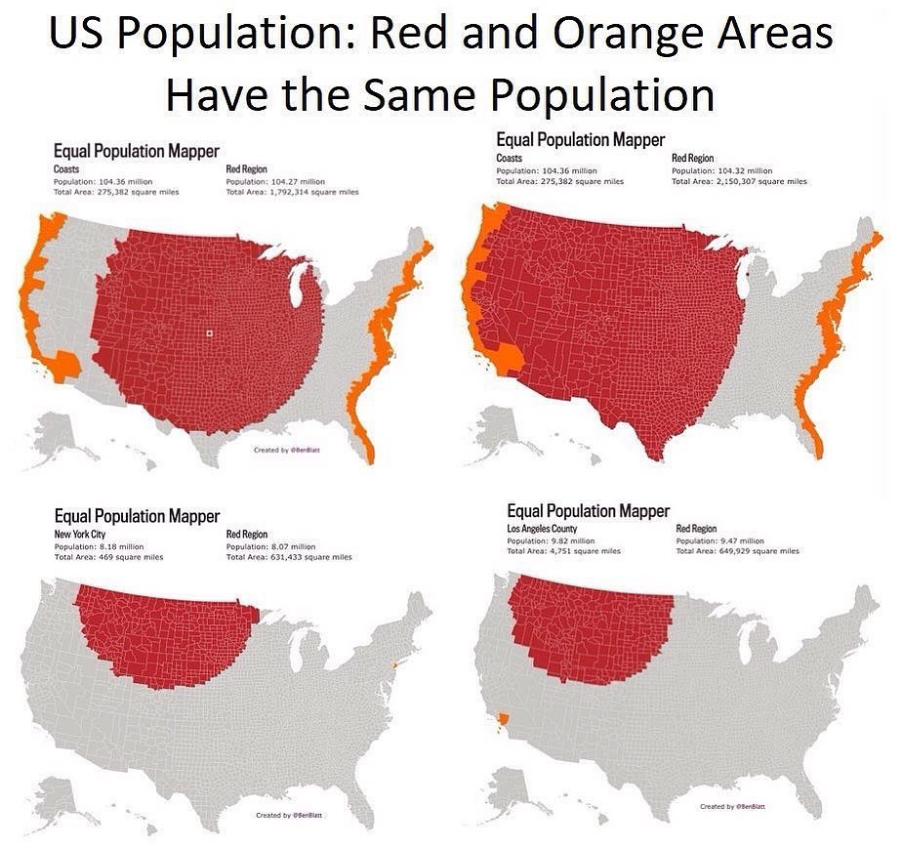|
|
You hear many concerns over future baby-making and population growth in sustainability circles. Now the data trends are clear: the world is headed toward a sustained population decline. Let’s explore three ways overpopulation is a myth.
In 2021, China saw its first population decline in 60 years, and the United States noted similar data. Apart from Africa, every region on Earth now expects more deaths than births in the coming decades.
What are the implications of sustained population decline? Can it be prevented?
Busy? Try the speed read.
The scoop: Overpopulation is a myth because Jack Ma and Elon Musk said so. No, but a population collapse is more likely than an overpopulated planet. And the world could never be overpopulated.
Some talking points for the dinner table:
- Overcrowded cities ≠ overcrowded planet. The entire world population can fit in the state of Texas with the same population density as Manhattan.
- Lopsided populations will inevitably occur in modern advanced nations. That means young workers will be unable to support aging populations, causing natural population declines.
- ‘Malthusian traps’ refer to inevitable food shortages as populations grow. Either Malthus was right, and some of us go hungry (as in, we don’t need to halt population growth artificially), or he’s wrong. The population keeps growing sustainably through innovation.
Bottom line: The Earth has plenty to offer for 9 billion mouths. And a sustained population decline (mainly due to lower fertility rates) is already becoming a realistic outcome.
Dig deeper → 2 min
Overcrowded cities ≠ overcrowded planet

The world has overcrowded cities, not overcrowded countries. In the US, for example, the West Coast and East Coast alone make up around a 1/3 of the total population.
New York City and LA County each have the same population size as 630,000+ square miles of land near Idaho and the Dakotas.
Meanwhile, if the entire world population lived in Texas, we would still be less crowded than New York City. Texas has over 268,000 square miles of land for a planet of 8 billion-plus people.
That would equate to approximately 30,000 people per square mile. Manhattan, on the other hand, boasts 67,000 people per square mile! That leaves us with a world population packed in Texas, with plenty of room for tourists.
Lopsided populations
At the 2019 World Artificial Intelligence Conference (WAIC) in Shanghai, billionaires Elon Musk and Jack Ma talked about population collapse, futurism, and AI. You heard me right, population collapse, not overpopulation.

“Most people think we have too many people on the planet, but this is an outdated view,” Musk said while on stage with Ma.
The two business moguls discussed how a population decline would affect advanced nations like China and the US. Every continent (except Africa) expects population growth to decline in the 21st century. After consensus data popped up in April 2021, that fear became a reality.
Experts warn about the emergence of lopsided populations. And the impact can be catastrophic.
Lopsided populations refer to the ability of a young working-class to support a growing population of older people. In China, the rate of aging is growing much faster than the growth of new babies. Eventually, this can cause severe economic instability.
The emergence of AI will further deteriorate human population growth in rural areas as families depend less on family size to maintain the land.
Malthusian traps
Thomas Robert Malthus was an influential economist from the early 19th century. He believed that population growth would eventually be stifled by its inability to feed a growing population.
Eventually, diminishing returns will occur, and the population will fall again. Modern economists call this catastrophe a “Malthusian trap.”
Malthus’ population theory had many critics in the industrial age when technological advances in automation and production allowed humans to sustain populations well beyond prior human imagination.
For example, Henry George argued against Malthus by distinguishing humans from other creatures. As the population of jay-hawks grows, there are fewer chickens. As the human population grows, the chicken population also grows because we can artificially create more.
Therefore, how can we compare humans to natural ecosystems with limits to growth? Humans create artificial factors.
However, there are two possible scenarios:
- Malthus is right about overpopulation, and worst case, the world population will decline on its own due to a shortage in food supply.
- Malthus is wrong, and the human population will continue to sustain its growth… regardless of population size.
So why are we colonizing Mars?
If we fear uninhabitable land from climate change, why colonize Mars? Isn’t that land… like… uninhabitable.
Let’s figure out a way to make Siberia livable for future cities. Let’s prevent harsh wildfires in California and Australia. Or find out how to disaster-proof Haiti and Taiwan. We don’t need Mars for climate change, we want it because it’s a cool technological achievement and it has natural resources.
Wealthy nations do not grow exponentially
The Earth can handle way more than 9 billion people, and it’s just a matter of allocating resources properly. Overpopulation is a myth because the world is not overpopulated, cities are overpopulated, and advanced societies are not well-balanced for long-term growth.
Public health policy through 2021 forced city-goers to reconsider the modern urban lifestyle. Hundreds of thousands scattered to the Midwest, Southeast and Southwest United States in hopes of a more laissez-faire existence.
In my opinion, this population shift was inevitable. One way or another, city populations would have reallocated themselves.
As much as the World Economic Forum wants it to be true, the modern mega-city is not sustainable. People like privacy, humans crave companionship, and population growth eventually hits a diminishing return on human health and happiness.
So if you want to contribute to a sustainable human future, learn more about electric cars, renewable energy, recycling, or gardening. You don’t have to avoid having kids.
This article originally published on December 28, 2020.













People reacted to this story.
You\’re forgetting that we can only produce the crops to sustain us and our cattle thanks to artificial fertilizers which are made from non-renewable resources and need energy resources to extracted, transformed, distributed and applied which are also non-renewable.
Just like everyone else pointing the finger at Malthus you forget that we bought time when we invented artificial fertilizers and that just because what he predicted hasn\’t come true doesn\’t mean it won\’t.
I agree Malthus hasn’t been disproven just yet… I am curious to see how lab-grown meat will change the food game. I’m certainly more a Promethean than a dooms-dayer, but realistically unless something big changes with food security billions are at risk of starving during this century.